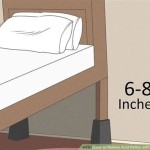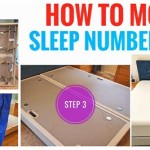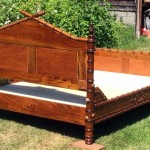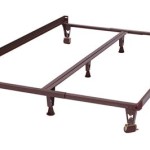How Long To Use Bed Rails
Bed rails, also known as bed guards, are safety devices designed to prevent falls from beds, particularly for children and individuals with mobility issues. While they provide a sense of security and peace of mind, the question of how long to use bed rails often arises. There is no definitive answer, as the duration of bed rail use varies based on individual factors and needs. This article explores key factors to consider when determining the appropriate length of time to use bed rails.
Individual Needs and Risks
The primary determinant of how long to use bed rails is the individual's specific needs and risks. For young children, bed rails are generally recommended until they are old enough to climb in and out of bed safely, usually around the age of five. However, some children may require bed rails for longer periods due to developmental delays or other factors. For individuals with mobility limitations, such as those recovering from surgery or dealing with conditions like dementia, bed rails may be necessary for an extended period or even indefinitely. Regular assessments by medical professionals or care providers are crucial to determine if continued use is warranted.
Safety and Functionality
While bed rails offer enhanced safety, it is important to consider their potential drawbacks. Some individuals may experience discomfort or become trapped between the mattress and the rail, leading to frustration or even injury. Additionally, bed rails can sometimes hinder mobility and independence. If an individual is able to move freely in and out of bed without falling, the need for bed rails may be reevaluated. If safety concerns remain despite these limitations, alternative measures like raised bed heights, specialized mattresses, or additional caregiver support may be considered. The focus should be on creating a safe and comfortable sleeping environment that promotes independence and well-being.
Ongoing Assessment and Review
Ongoing assessments and reviews are essential to determine the appropriate length of bed rail use. Regular evaluations by healthcare professionals or caregivers should be conducted to assess the individual's progress, mobility levels, and risk factors. Monitoring for any changes in behavior, physical abilities, or cognitive function is crucial. If the individual demonstrates improved stability, increased strength, or reduced risk of falls, the need for bed rails may be reassessed. If, however, the individual's needs remain unchanged or worsen, continued bed rail use may be recommended. It is important to prioritize safety while also striving for the greatest degree of independence possible.
Collaboration and Communication
Open communication and collaboration play a vital role in determining the duration of bed rail use. Healthcare professionals, caregivers, and family members should work together to gather information, discuss concerns, and make informed decisions. Families should consult with their physician or other healthcare professionals to determine the best course of action.
By considering these factors and adapting to individual needs, it is possible to determine the optimal length of time to use bed rails. Prioritizing safety while fostering independence ultimately contributes to a positive and comfortable sleep environment for individuals of all ages and abilities.

Baby And Toddler Bed Rail Transition From Crib To Or Cosleep Safely

How To Install And Use Bed Rails For Seniors Equipmeot

Safety Bed Rails Toddler Beds Everything You Need To Know

Ez Adjustable Bed Rail Safety Hand Rails Pivot Down Support Plus

Standers Bed Rails Performance Health

Easy Diy Toddler Bed Rail Bumper Solution For Kids Falling Out Of

Warning Portable Bed Rails Can Fatally Entrap Users

Cpsc Issues Warning For Bed Rails After 3 S

Bed Rail Fold Down 30 Anderson Wheelchair
Signature Life Sleep Safe Home Bed Rail Free







